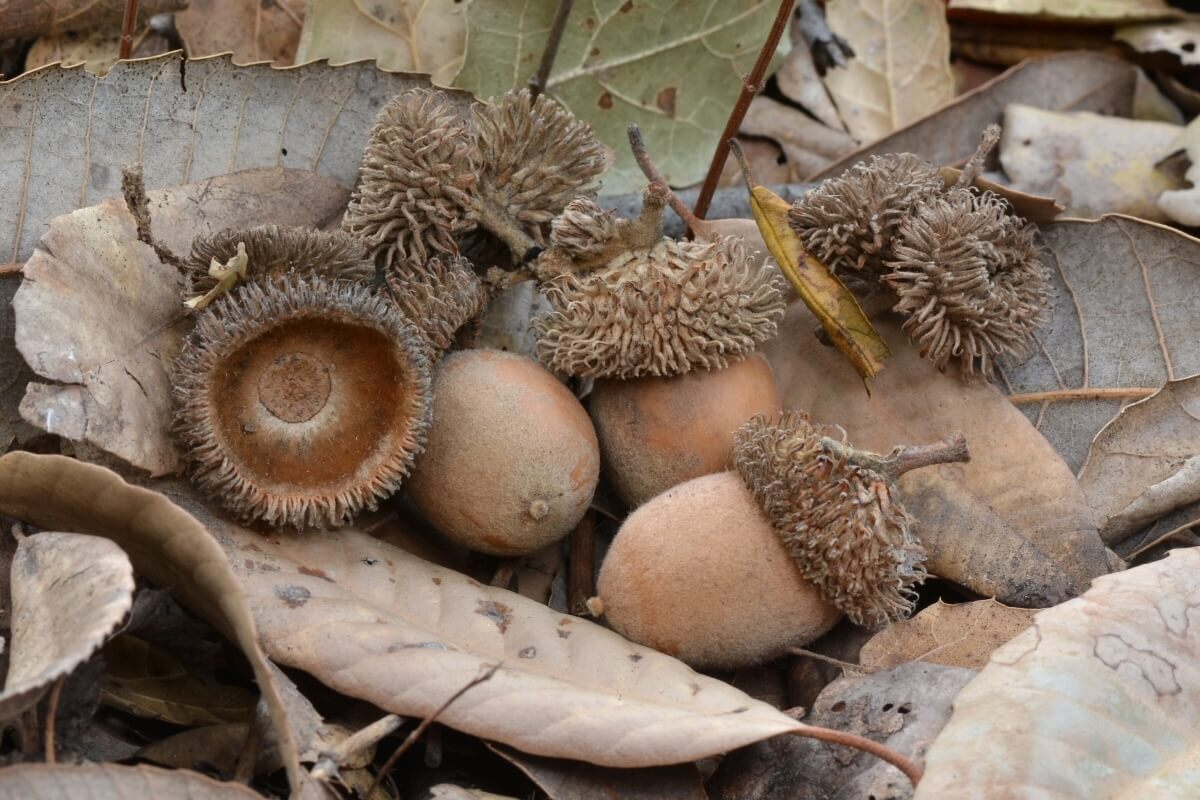Some seeds have built-in mechanisms that prevent germination until ideal conditions are met. Even when perfect conditions are met, some of the ‘seed bank’ of a species will not germinate. They will wait, often camouflaged in the duff, as an insurance policy against a possibly disastrous growing season.
When planning to propagate try to think like nature. First, pay careful attention to the conditions that the parent plant was growing in; the duff, the soil, the water supply, the climate and seasonality. Then think about what happens to those seeds in the wild. Think about the natural conditioning processes that occur to plants, and their seed in their native environment; and try to duplicate these natural processes.
Would it make any sense for the seed to germinate right away, or will conditions be better for growth in another season? Seeds do not necessarily ‘hit the ground’ at the best time for them to germinate. Some seeds may be programmed to germinate right away, while others need to be ‘dry-conditioned’, (which is what we’re doing while cleaning and storing). This is a great time to think about the environmental conditions of the parent plant. What changing conditions are the seeds subjected to while they wait for optimum conditions for germination? Many seed coats have germination inhibitors that require a certain amount of rainfall to de-activate. But, seeds from plants in arid areas have to germinate fast at the moment of transition from a dry summer to a mild, wet winter. Other seeds need to experience a snow pack, and then a thawing as the days lengthen.
Are the seeds encased in fruits that are food for some creature? These types of seed need this ‘prior experience’ in order to germinate! Scarification is the term used to describe methods that damage the seed coat, thereby allowing moisture into the seed, and starting the germination process. With some seeds this is only part of the pre-germination process. In nature it can happen by fire, by abrasion from gravel, or by animals. Fleshy fruits actually inhibit the germination of the seeds within until the flesh is washed away. These fruits are meant to be passed through the digestive tract of an animal, and etched by the acids in the digestive tract. The scarified seeds, now minus the flesh, are then passed out, complete with their own supply of organic fertilizer! Seeds are often distributed over a wide area, and away from the parent plant by birds and other creatures. Many chaparral plants, and closed-cone pines, need fires to scarify their seeds, and also to create the ideal seed bed and availability of light.
For example: a foraging squirrel may damage the seed coat of a pine nut, and then because of the abundance of seeds available in each cone, overlook it. The seed may then get partially buried in the duff, and, over the course of the next season, be exposed to changing temperatures, perhaps a snow pack, and changing day lengths. Photoperiodism will help to trigger germination if and when conditions are optimum for growth.
Stratification is the term used to describe the effect that weather, changing temperatures, and day length have on a seed store. The seeds of summer annuals are programmed to go through changing day lengths, and receive a certain amount of rain before germinating. Desert wildflowers, which germinate during a very short monsoon season, must experience a season of very hot temperatures first. Seeds of high mountain plants need to experience a snow pack, and then moist, warming weather and lengthening days before germinating. Seeds of some plants simply need to ‘ripen’ further after detaching from the parent plant, and before germinating.
REPLICATING SOME NATURAL CONDITIONING PROCESSES
Scarification
Soak seeds in boiling water for thermal shock.
Soak seeds in very strong, dark, black coffee to mimic the digestives acids.
With large seeds use a knife to nick off a tiny bit of the seed coat.
Line a jar with sandpaper, place your seeds within, and shake.
Fill a jar with grit, and seeds, and shake to scarify.
Create a charate (burned materials) to topdress the seed flat.
Smoke pads are available from some suppliers,
or you can try using a smoker (such as those used by beekeepers)
Smoked fish can be soaked, and the water used as a drench !
Stratification
Soak the seed in hot water, or in black coffee.
Mix the seed with a moistened medium, and refrigerate for two to three months. Be sure to label the seed. Keep it moist, and watch for the growth of the radicle, potting into a soil mix soon after growth starts.
Some seeds respond to warm and moist soil conditions which is easy to duplicate with a propagation mat and moist soil mix. Seeds can be fooled into thinking it’s spring with a gro-light set for fourteen hours a day.
For the seeds of many California perennial plants: Prepare the seed flats or trays in late summer, or early fall. Make sure your medium is moist, carefully sow and label your seeds, and then water them in. Cover the seed flat with cloud-cover fabric to protect against predators, and find a protected, shady place outdoors for it. If the rainy season comes as expected, you only need to wait and watch. Some seeds will take months to germinate, so be patient. Once you see germination starting you must make sure that the seedlings receive water regularly. Transplant them when the first set of true leaves has formed.
Experiment with different methods! Divide the seeds of one species into different batches – and use a different approach with each batch. Keep records to determine which method yields the best results.


